
Cartographies of the heart
Five Acts of Love, a new exhibition at ACCA, maps the space in which memory, intimacy and resistance intersect.
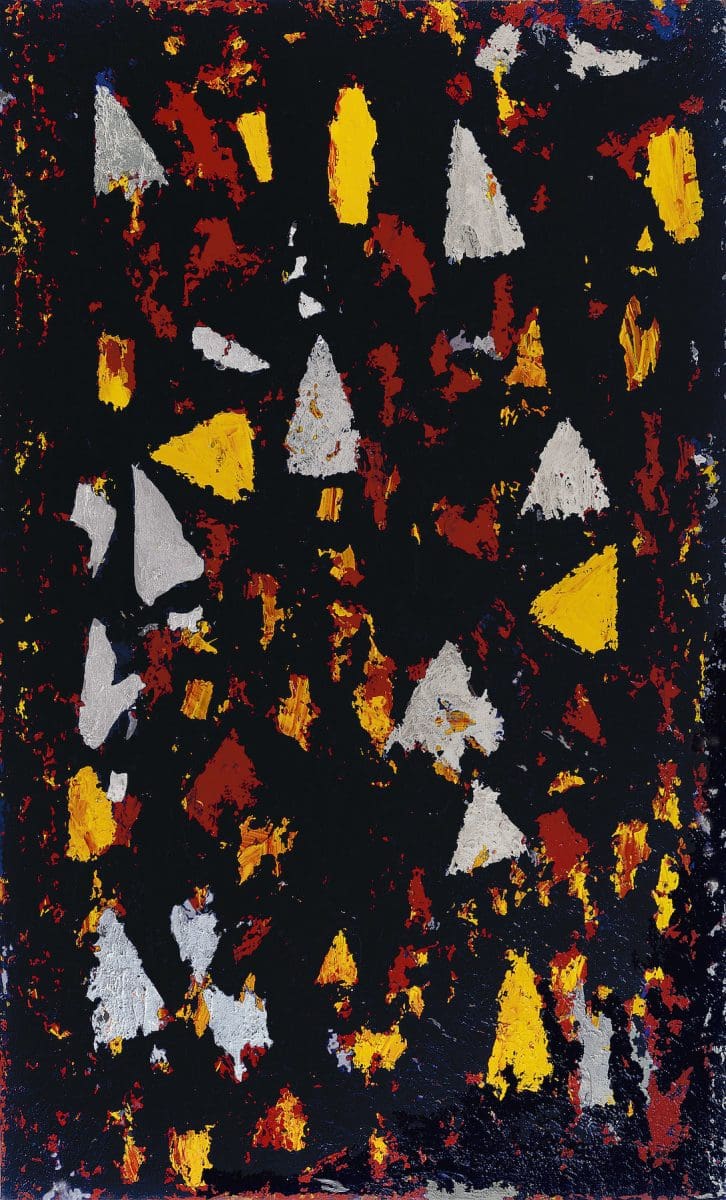
Peter Booth, Painting 1975, 1975, synthetic polymer paint and glass on canvas, 274.2 x 167.2 cm, TarraWarra Museum of Art collection. Gift of Eva Besen and Marc Besen AO, 2001. © Peter Booth.
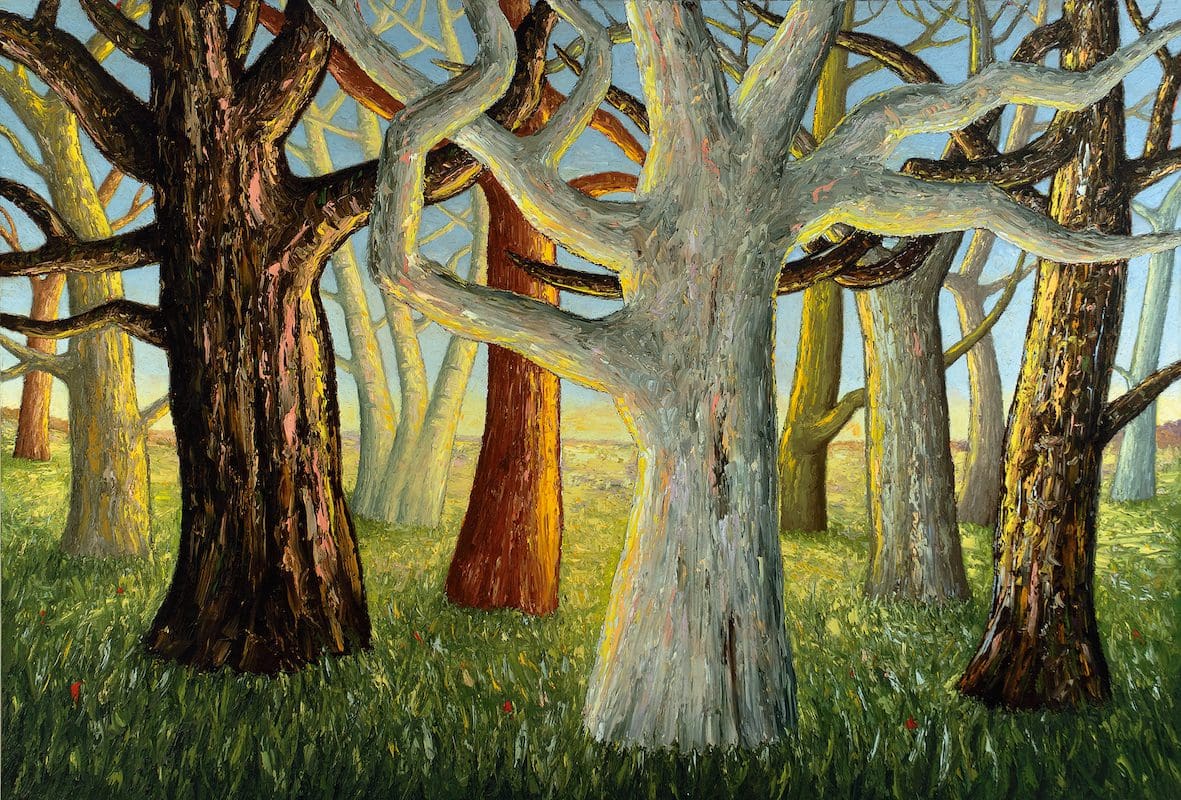
Peter Booth, Acheron Way, 1993, oil on canvas, 208.0 x 304.8 cm. Private collection. © Peter Booth.

Peter Booth, Painting 1981, 1981, oil on canvas, 170.2 x 213.4 cm. Private collection. © Peter Booth.
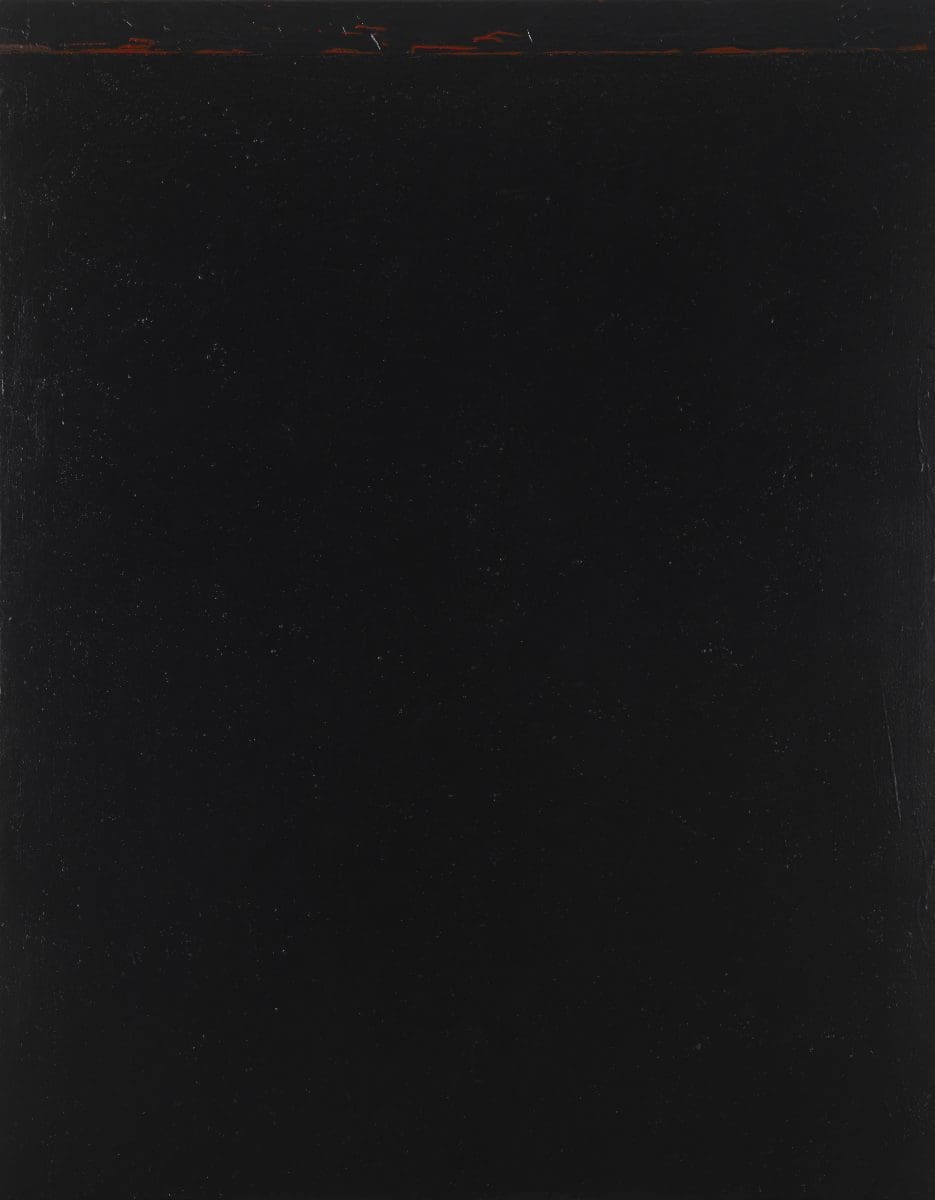
Peter Booth, Painting, 1974, synthetic polymer paint on canvas, 213 x 167.5 cm, Queensland Art Gallery, Gallery of Modern Art, Brisbane. Purchased 2006 with funds from the Estate of Lawrence F. King in memory of the late Mr and Mrs S.W. King through the Queensland Art Gallery Foundation. Photograph: Natasha Harth, QAGOMA. © Peter Booth.
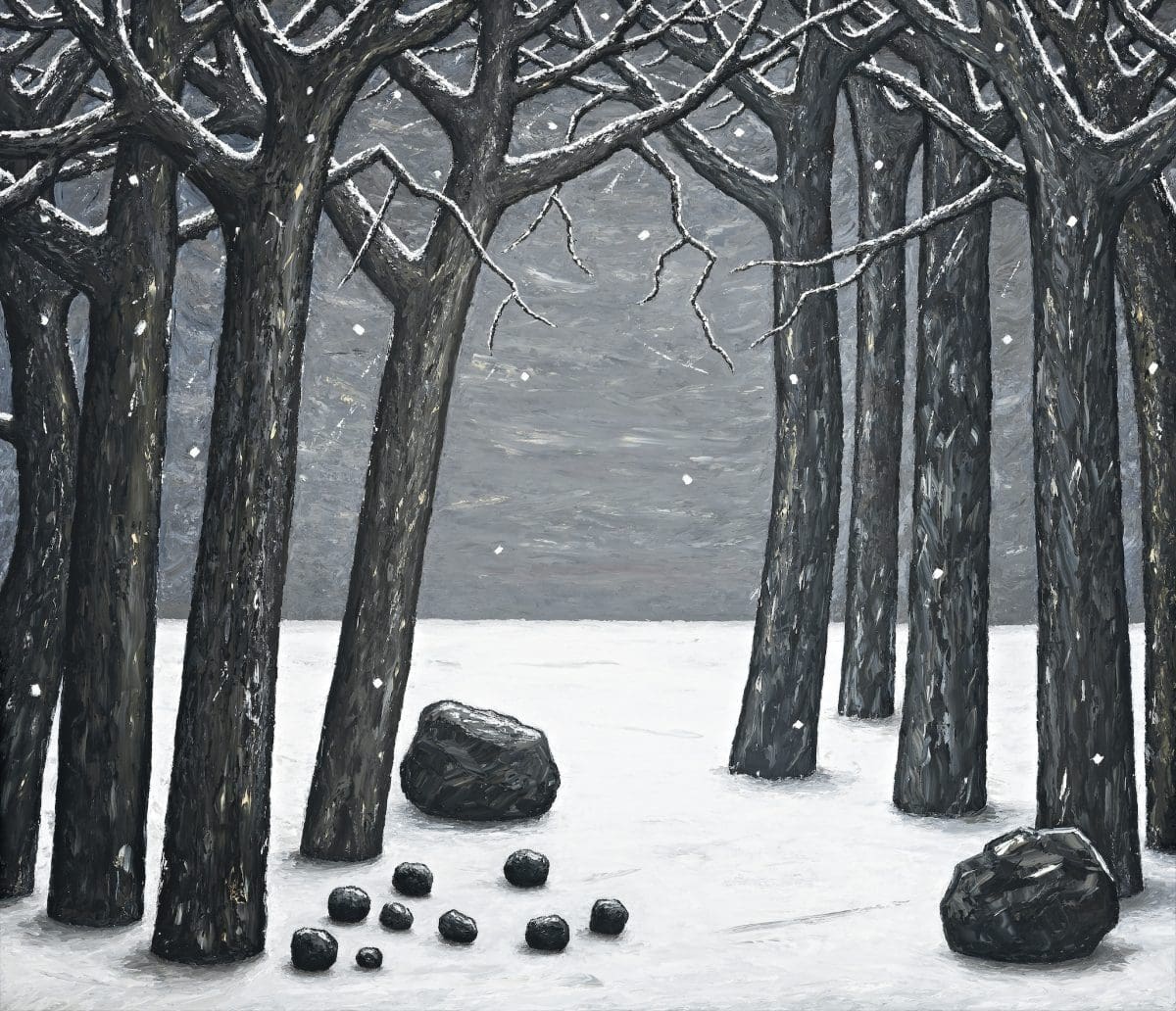
Peter Booth, Painting, 2014, oil on canvas, 188 x 219 cm. Private collection. © Peter Booth.

Peter Booth, Painting, 2018, oil on canvas,182.9 x 121.9 cm. Private collection. © Peter Booth.
“Every painting is always two paintings: the one you see, and the one you remember,” says American essayist and novelist Siri Hustvedt. The painting in question for me is Peter Booth’s Painting, 1977—also known as ‘Man with Dog’.
I trace back almost 20 years to my 16-year-old self—slouching over a desk in Oberon High School’s photography studio. I am studying a photocopy of Booth’s Painting, 1977, and trying to understand why this depiction of an apocalyptic scene provides me with a sense of comfort. We are being taught visual composition in preparation for exams. I must express what I see in the painting and explain what it means.
Staring back at me is a masculine figure with vermillion-coloured pupils and a determined resolve. The figure’s ragged grey hair is blown back by a cold wind and in a moment of vulnerability, he stops walking and places his hands into the pockets of his jacket. A white dog stands faithfully alongside. His eyes are the same colour as what may be the sun—but for me, it’s the moon. This man stoically leaves a chaotic and violent event with burning buildings behind him.
One of this country’s foremost abstract, figurative and surrealist painters since the 1960s, Booth’s last Australian survey, Human/Nature, was in 2003 at The Ian Potter Centre: NGV Australia. It was the first exhibition I ever saw, and the first retrospective the NGV Australia ever held for a living artist.
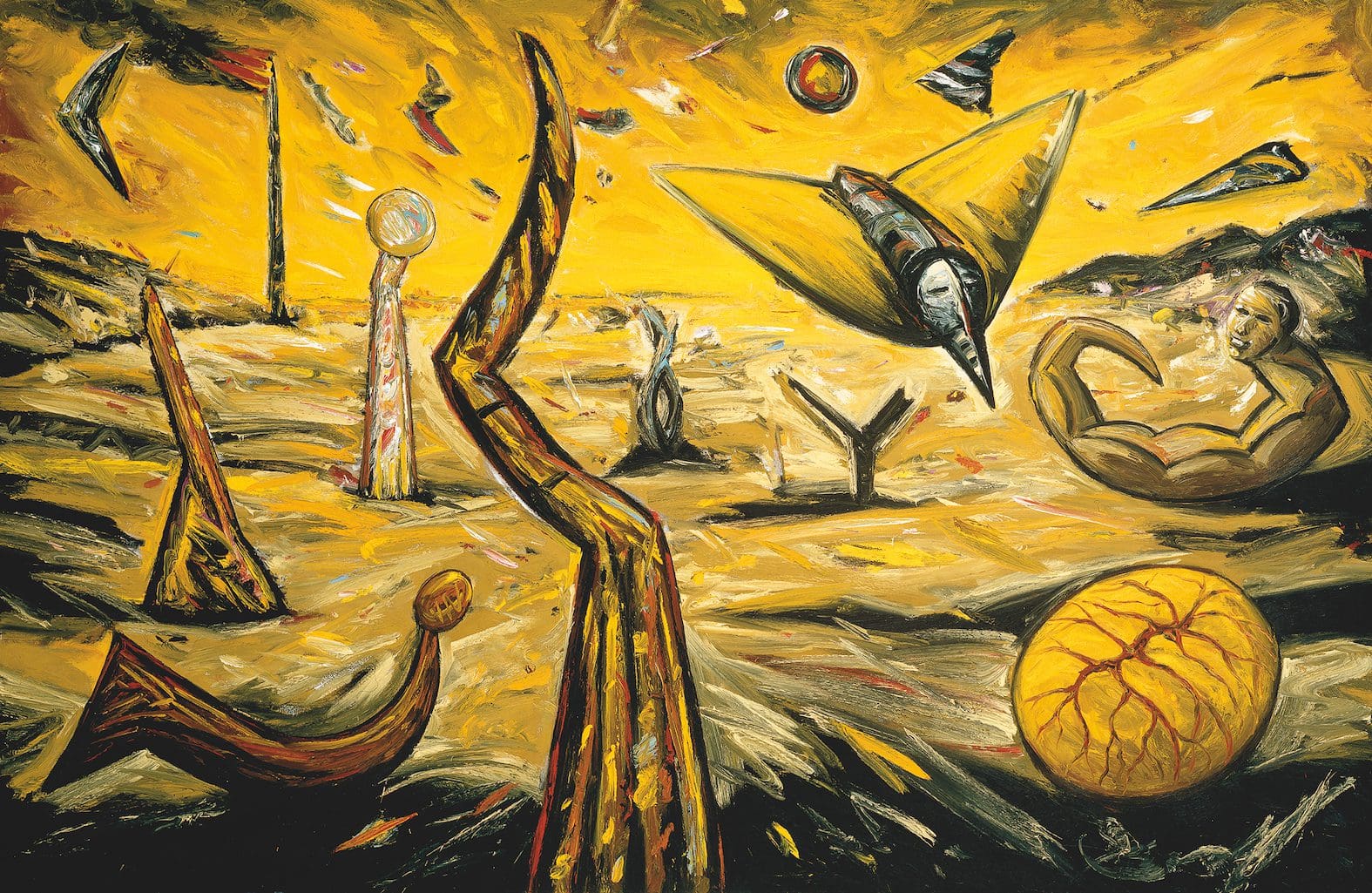
Anthony Fitzpatrick, curator of Booth’s latest survey at TarraWarra Museum of Art, also saw the show. As he surmises, “Once seen, Booth is never forgotten.” I confess to Fitzpatrick that from the exhibition, I can only recall one of the works from the ‘Doorway’ series, 1970-1974. This renowned series of large, abstract works, heavily layered with monochrome colour, suggest an entry point of an open door; what’s beyond is ominous yet provokes marvel. As Fitzpatrick explains, Booth didn’t designate this name—preferring to leave his works untitled—but he has come to accept it.
While the TarraWarra survey features a collection of Booth’s works from the 1970s to the 2000s, it opens with a work in the ‘Doorway’ series: Painting, 1974. It’s a canvas covered with shades of black. As the curator says, “Just near the top, there’s this very thin horizon line of red, and it feels like there’s this massive magma just behind the surface that’s starting to seep through.” I’m told that written on the back of some ‘Doorway’ paintings is an instruction: “Never hang more than six inches from the floor.” As Fitzpatrick explains, “If you hang the work a little lower for the viewer . . . it becomes more immersive, and this painting is the opening work in the exhibition with the idea of the doorway as a threshold.”
This minimalism is compelling. “The ‘Doorway’ series could be about nothingness, or it could be a void,” says Fitzpatrick, “but voids are also where things are generated from—so they could be about an idea of fullness . . . you could almost see them as a kind of dark mirror.” In a rare interview with Australian artist, writer and curator Peter Hill, Booth humbly discusses how the ‘Doorway’ series was “influenced by what was going on in the art world at the time, in reduction, minimalism and colour field painting”.
Throughout his epic career, spanning over six decades, Booth has purposely left many of his artworks without didacticism—trusting his audience to deduce their own meaning. “Booth doesn’t draw a distinction between abstract painting and figurative painting,” says Fitzpatrick. “What’s most important for Booth is what a painting can tell us about the human condition.”
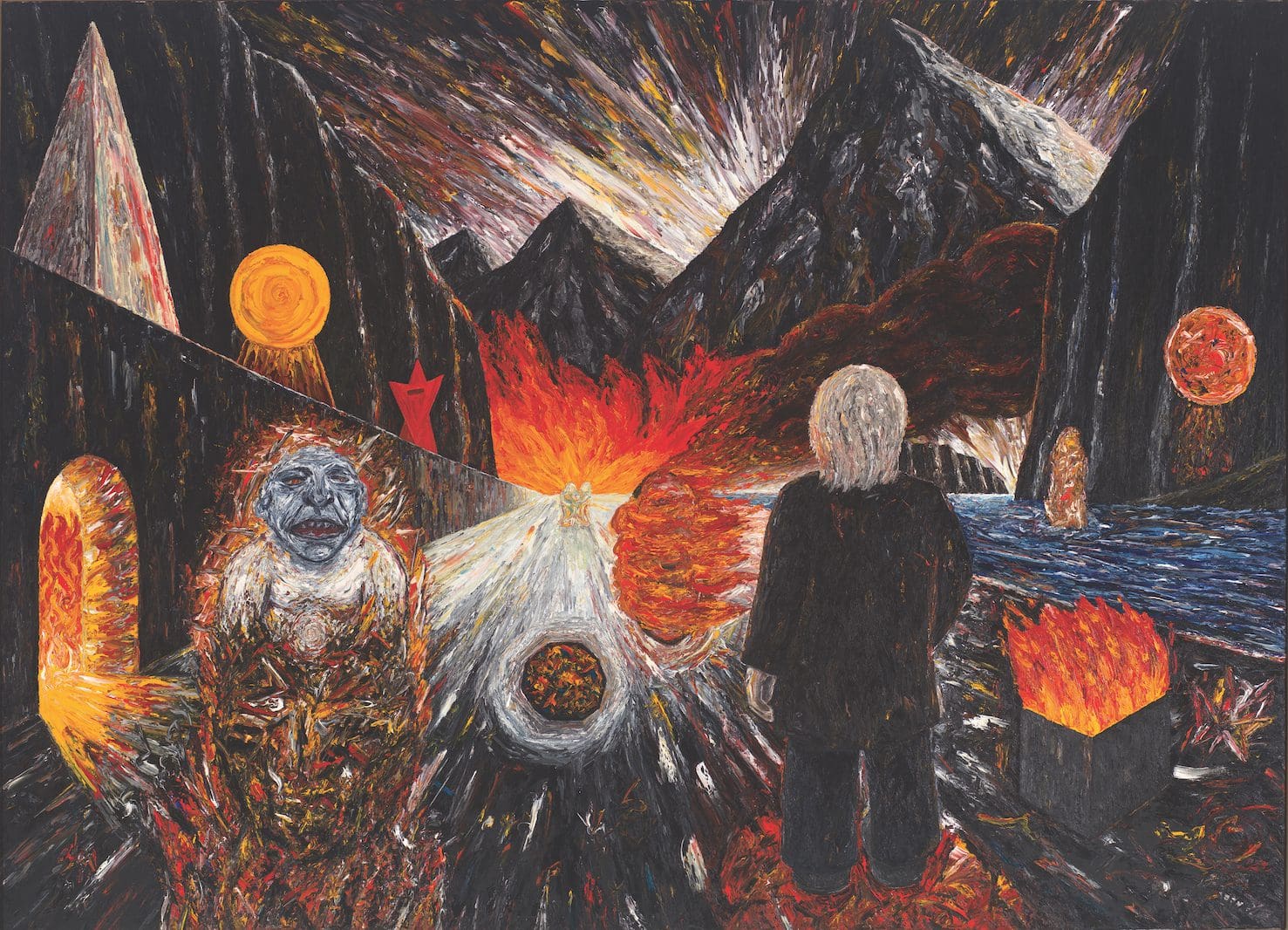
For me, Booth tells the possibilities of how painting can represent the emotional tension between real and imaginary worlds: to dare viewers to see part of themselves in both his abstract and figurative work. It is also related, at least for me, to time passing. As Hustvedt writes, “The work of art we carry around with us is a memory, not like the original . . . it is possible to return to a piece of art years later and have a completely new experience.” But instead of returning to Painting, 1977, I’m turning to what may be viewed as the accompanying work, Painting, 1978—and included in the TarraWarra survey.
This time, rather than seeing the front of the aforementioned man with vermillion-coloured pupils and a burning city behind him, we see his back profile and what lies in front of him: the cataclysmic scene he’s walking into. His right hand is in his pocket with his left-hand slack by his side. This man must leave the world burning behind him and enter the unknown. He is confronted with an equally menacing scene of swarming volcanic craters and a laughing demonic figure watching on. He is ready to face another version of the self.
Peter Booth
TarraWarra Museum of Art
(Healesville VIC)
26 November—13 March 2023
This article was originally published in the November/December 2022 print edition of Art Guide Australia.